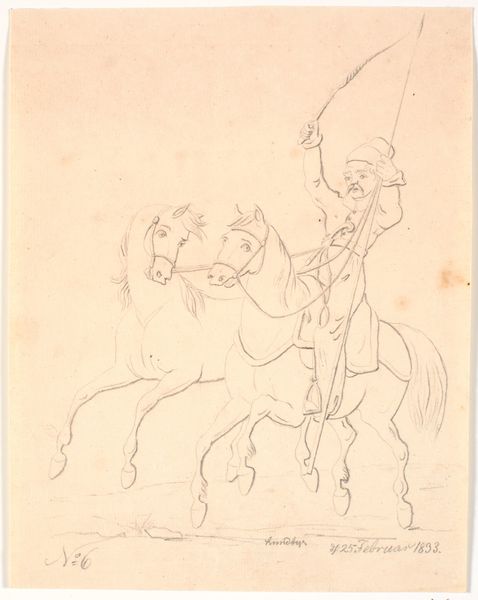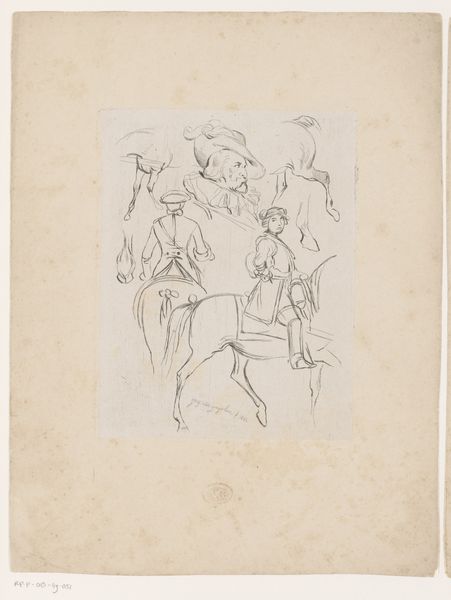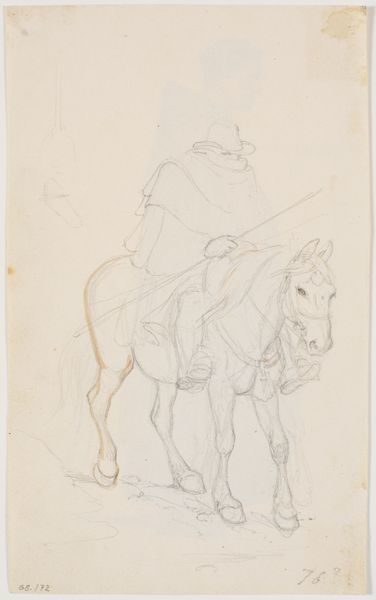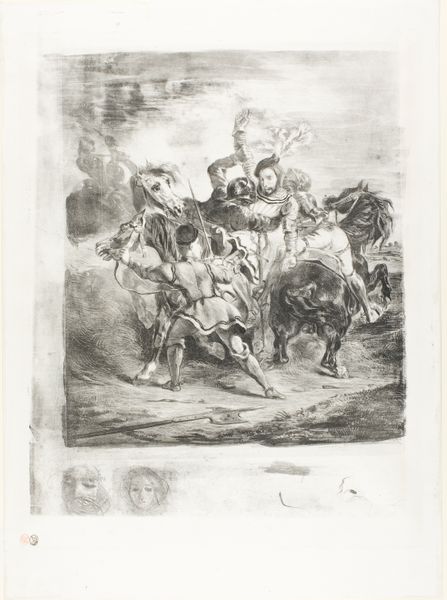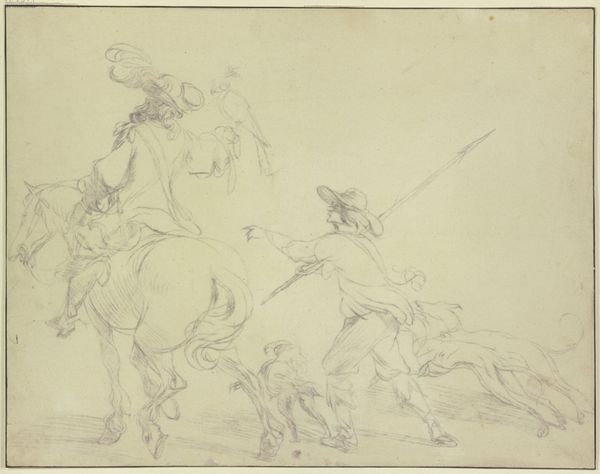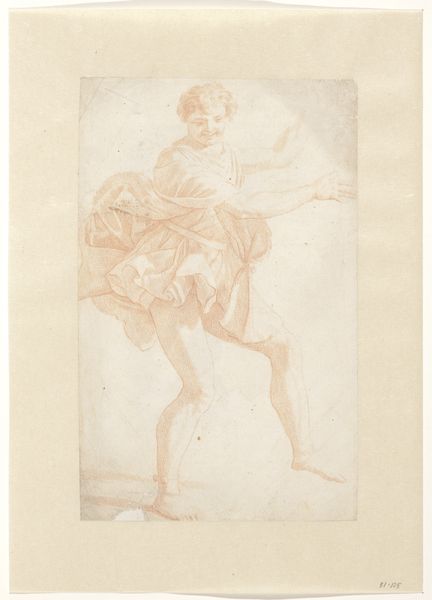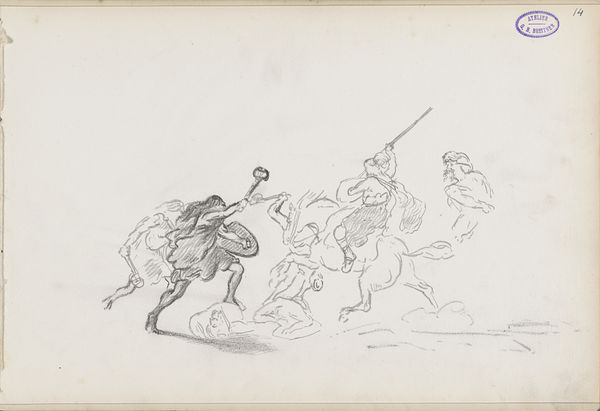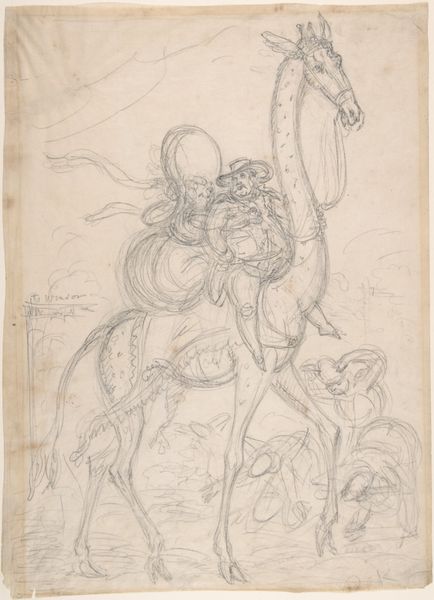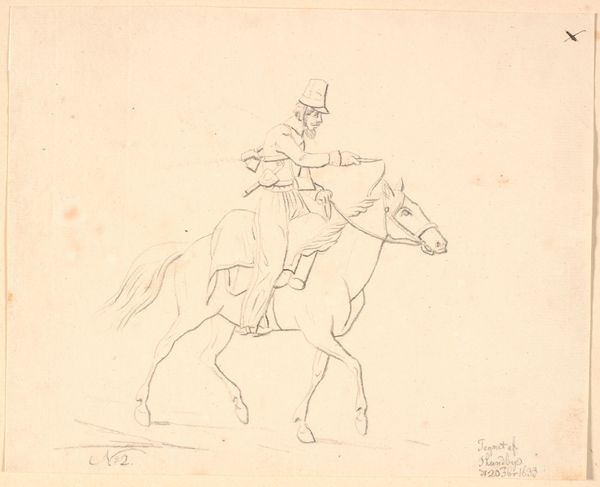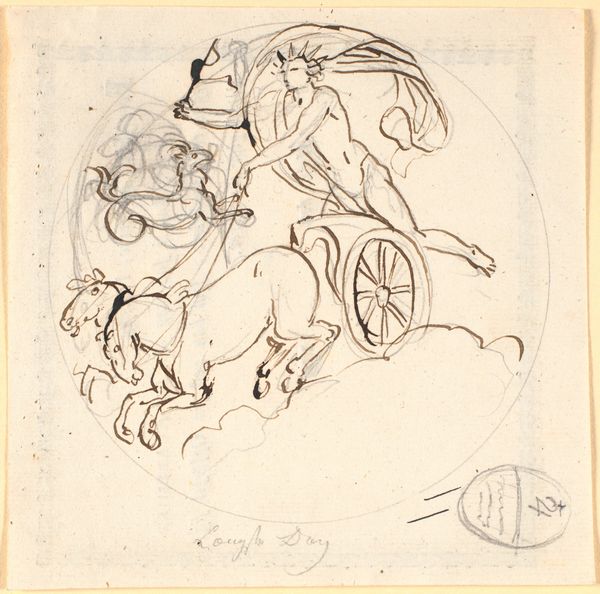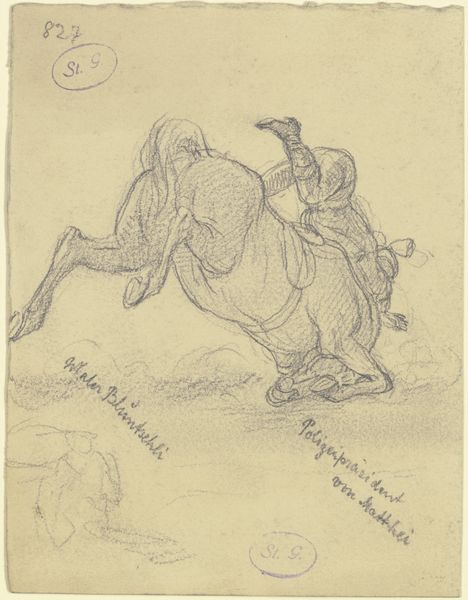
drawing, pencil
#
portrait
#
drawing
#
ink drawing
#
landscape
#
figuration
#
romanticism
#
pencil
Dimensions: sheet: 32.07 × 25.72 cm (12 5/8 × 10 1/8 in.)
Copyright: National Gallery of Art: CC0 1.0
Curator: The frenetic energy captured in Delacroix’s “Arab Horseman at the Gallop” from 1849 is palpable, isn’t it? The pencil and ink work convey such dynamic movement. Editor: Absolutely! The swirling lines create an impression of immediacy, as if he captured this scene in one quick burst of artistic fervor. But to my eye, it’s not just about speed; there's a definite rawness here too, stemming from the very medium used to depict it. The exposed process is a huge part of the piece's affect. Curator: I agree. Consider the historical context: Delacroix's travels to North Africa profoundly impacted his work, influencing not only the subject matter, like the powerful figure of the horseman here, but also contributing to broader shifts in 19th-century Orientalist painting. Editor: And look closely, you can see that those quick pencil lines suggesting flowing garments, kicking limbs, and that furious expression convey something much more about social relationships. A material study can tease out the relationship of the "savage" or the "exotic" as a common Romantic subject and trope with all kinds of embedded colonial notions. Curator: Precisely! The work's reception would certainly have been tied to those established tropes of the time. Were Delacroix, through the artifice of art making and the act of representation, creating something factual and informative, or promoting social stereotypes, even unwittingly? Editor: Yes, those issues remain front and center! This drawing’s rapid execution reminds me that artmaking isn't always a considered process. Sometimes, it's about speed, production, and the conditions of both artist and subject within larger global flows. And consider, as well, who got to participate in such social exchanges as the painter, the sitter, and the collectors and audience who assign value to these crafted items. Curator: A valuable consideration, highlighting the tension between artistic genius and the societal currents that shape it. It seems a relatively small work on paper has opened quite a substantial conversation, wouldn't you say? Editor: Indubitably, the immediacy of its creation can easily lead to deeper exploration of Delacroix's artistic methods and social consciousness during a particularly vibrant and often contested historical period.
Comments
No comments
Be the first to comment and join the conversation on the ultimate creative platform.
